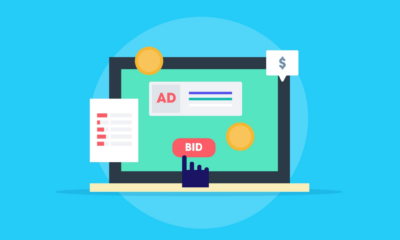MARKETING
7 Questions Every Writer Should Ask To Craft an Effective Lead

Updated April 25, 2022
“Please don’t read this article.”
That’s the unintentional plea made by content writer after content writer.
They craft a boring lead that would make even the most well-caffeinated person fall asleep. They spend hundreds of words to get to the point. They get so “creative” that they miss conveying the purpose of the article.
Ultimately, they tell potential readers to look elsewhere for interesting, valuable content.
I have read all types of leads – many good ones, too – in thousands of submissions to the Content Marketing Institute. I’ve been editing for more than 20 years – at a daily newspaper, a trade publication, a law firm, a content marketing agency, etc.
The universal truth is that too many people write ineffective leads.
Too many people in #ContentMarketing write ineffective leads, says @AnnGynn via @CMIContent. Click To Tweet
What is the article really about?
In journalism school at Ohio University, I learned to ask two simple questions that still help my writing and editing every day (thanks to Professor Michael Bugeja).
- What is the article about?
- What is the article really about?
Example:
- This article is about tips to create better content.
- This article is really about how to avoid mistakes many writers make in creating their leads and how to craft better, reader-worthy leads.
See the difference. The first answer is accurate but vague. It could be about almost anything content-related.
The second answer, though, gives the focus essential for a quality post and gives me, the writer, a clearer understanding of what I am trying to communicate.
TIP: Answer the second question several times – each response likely will improve upon the previous one – and a more refined answer will give your article laser-like focus.
Now, let’s incorporate the content marketing perspective into this process:
- What’s the article about?
- What is the article really about for the audience?
- What is the article really about for the brand?
Example:
- This article is about tips to create better content.
- For the audience, this article is really about how to avoid mistakes many writers make in creating their leads and how to craft better, reader-worthy leads.
- For the Content Marketing Institute, this article is to help position the brand as an online resource for content marketers who write.
Know the article’s why. 1. What’s it about? 2. What’s it really about for the audience? 3. What’s it really about for the brand? (Inspired by Professor @Michael_Bugeja) via @AnnGynn @CMIContent. Click To Tweet
Didn’t I just write that?
One of the biggest problems with leads I encounter is that they are so generic they could be swapped with other posts (within the brand and the industry), and no one would know the difference.
Write a lead that is only valid with your particular article and fits your brand’s voice. (If you need to be generic when you write a draft to help you get to the point, go ahead and do it. Just don’t forget to delete all those graphs before you publish.)
Too many leads are so generic they could be slapped atop multiple articles and no one would know the difference, says @AnnGynn via @CMIContent. Click To Tweet
TIP: Don’t forget to apply this across your brand, particularly if you have multiple editors – similar topics can lead to similar leads even with different writers.
Would I read this?
Don’t forget to be a reader. Walk away (even if it’s only to refill your coffee – I know you’re probably on a deadline). Now, with fresher eyes, read your lead. Would you want to read this article? Be brutally honest. If the answer is no, revise and read again.
TIP: If you still can’t craft a read-worthy lead, revisit the angle you’re trying to take or even the subject itself. Figure out what needs to change so you can write something you (your audience) would want to read.
Will readers get the point?
I love the nut graph – the nugget that explains the true value of the piece. The single sentence or paragraph in an introduction lets readers know why this article is relevant and valuable to them today. This keystone paragraph sets the stage.
The nut graph lets readers know why this article is relevant and valuable to them, says @AnnGynn via @CMIContent. Click To Tweet
Write a nut graph (some writers find it’s helpful to do first, so they always stay on topic). Incorporate the nut graph in the first three to five paragraphs – much further down than that, and it doesn’t matter.
TIP: Read news articles and other content and see if you can identify the nut graph. Does the writer clearly communicate it? How? Does it help focus the story? If you can’t find the nut graph, is the piece difficult to read? Do you think you know the intent or reason for the piece?
What’s in a glance?
Readers skim. They are likely to glance beyond the lead to read the subheads or bolded phrases to see if the piece delivers something they want. Write subheads that clearly map out your piece and can (almost) stand on their own. (It also can help with SEO.)
TIP: Read your subheads as standalone copy. Do they tell the story in the abbreviated form? Do they hit on every key point in the post? Do they promote less-important points? Are they grammatically parallel (i.e., if you use a verb as the first word in one, use a verb as the first word in all)? Adjust accordingly.
HANDPICKED RELATED CONTENT:
Should meta descriptions differ from the lead?
Don’t just copy and paste your lead into the meta description category. Write a distinct meta description that gets to the point in 156 characters. Given their appearance in search engine results, you have a lot of competition. At this stage, you want them to click. Explain succinctly what the article is really about – how it answers what the searcher is looking for.
TIP: At CMI, we also write 235-character excerpts for each blog post that appears in the newsletter and on the website page. These excerpts blend the intent of the lead with the to-the-point brevity of the meta description. It’s a warmer “lead” than the search engine results, but we are still going for the click first.
What about the headlines?
Headlines are the sexy part of every piece of content – they lure the reader more than anything else. As such, experts share plenty of tips and advice on how to craft successful headlines. Here are a couple of helpful posts focused strictly on headlines:
Don’t forget to ensure your headline delivers. You’ll only have frustrated and disappointed readers if your headline (and your lead) has little, if anything, to do with the rest of the article.
TIP: Decide if the primary goal of the headline is to attract clicks through search or get readers to click from other sources (i.e., newsletter, social media). The headline intent will impact the words you choose.
Cover image by Joseph Kalinowski/Content Marketing Institute














You must be logged in to post a comment Login